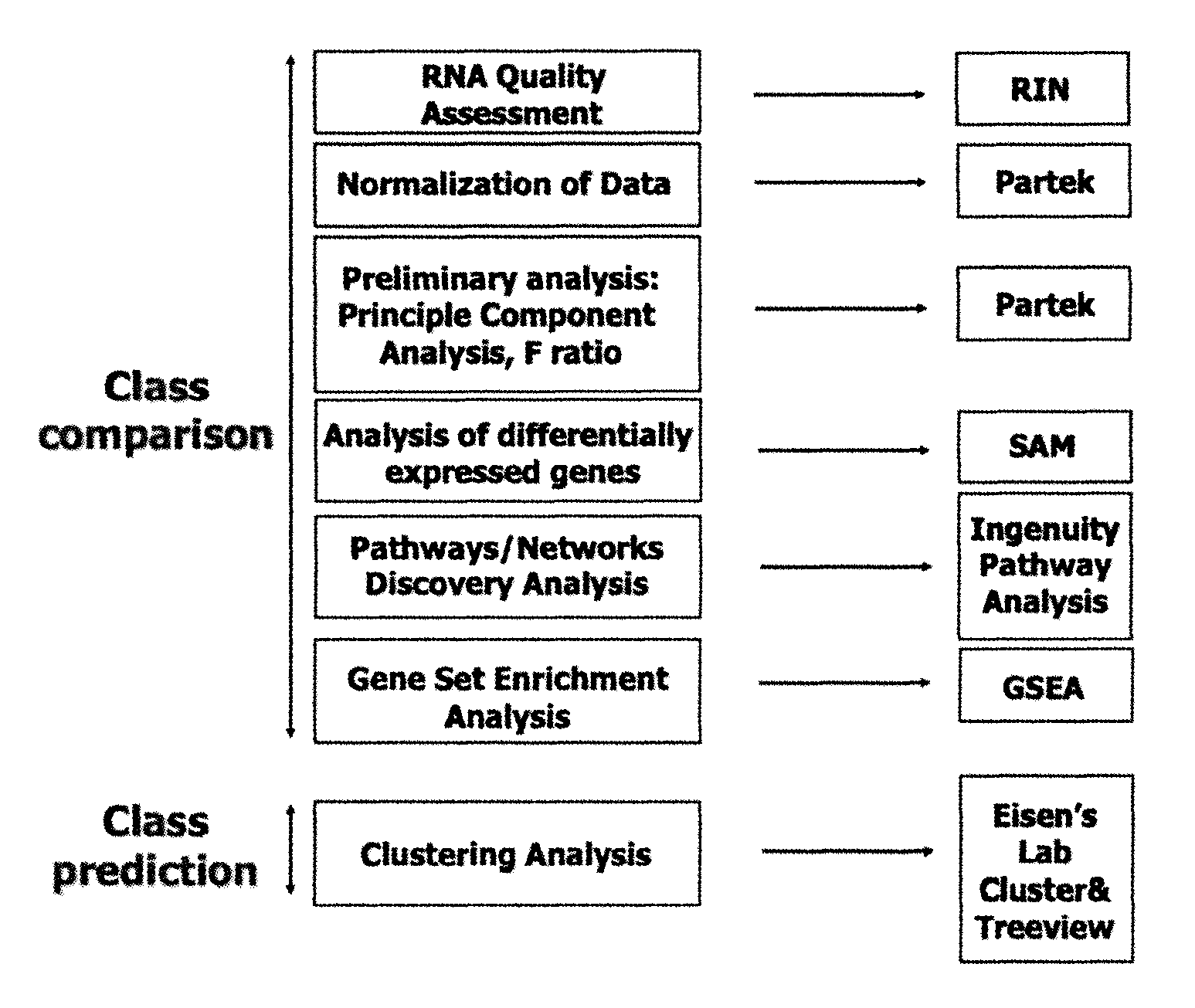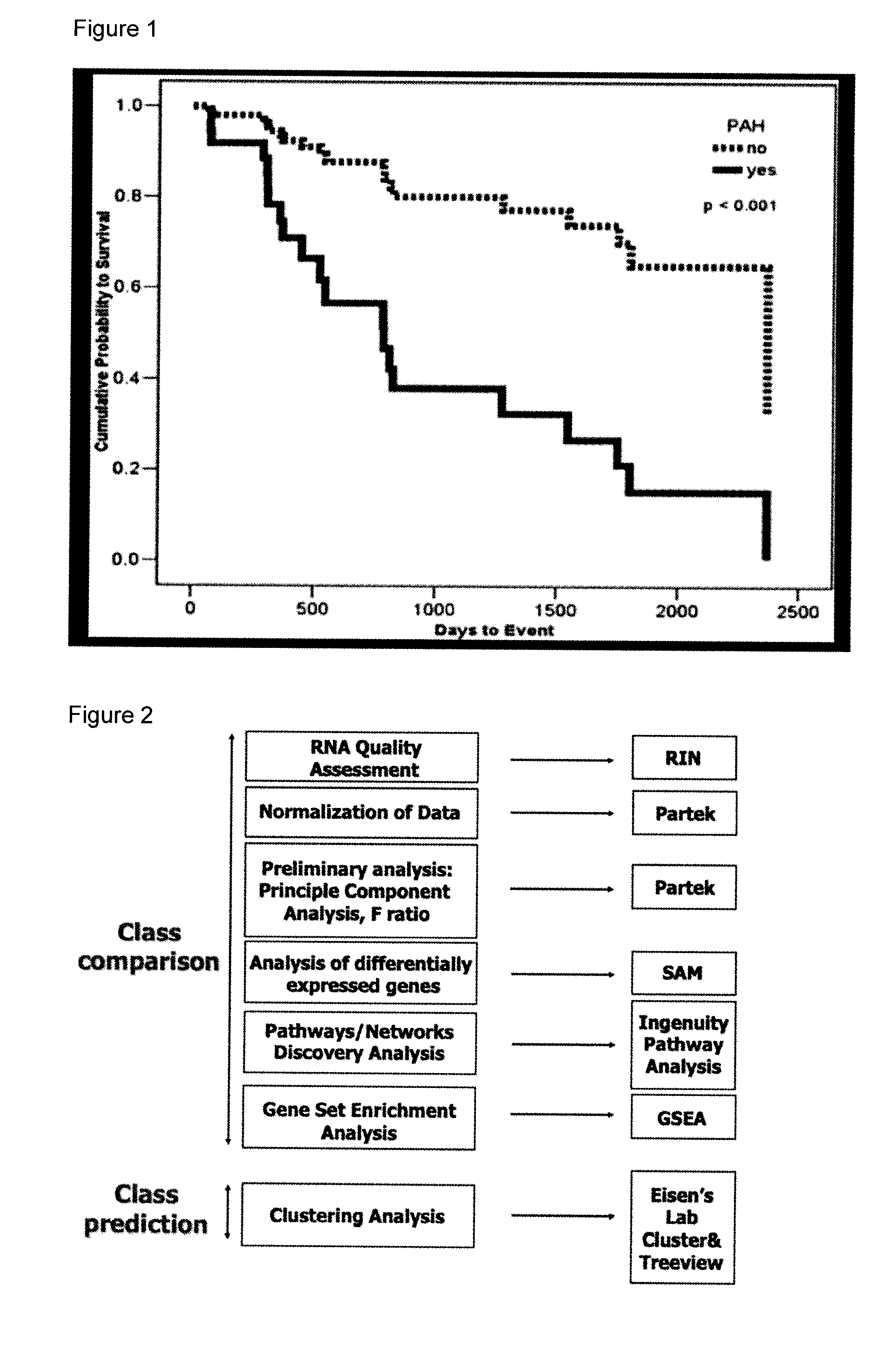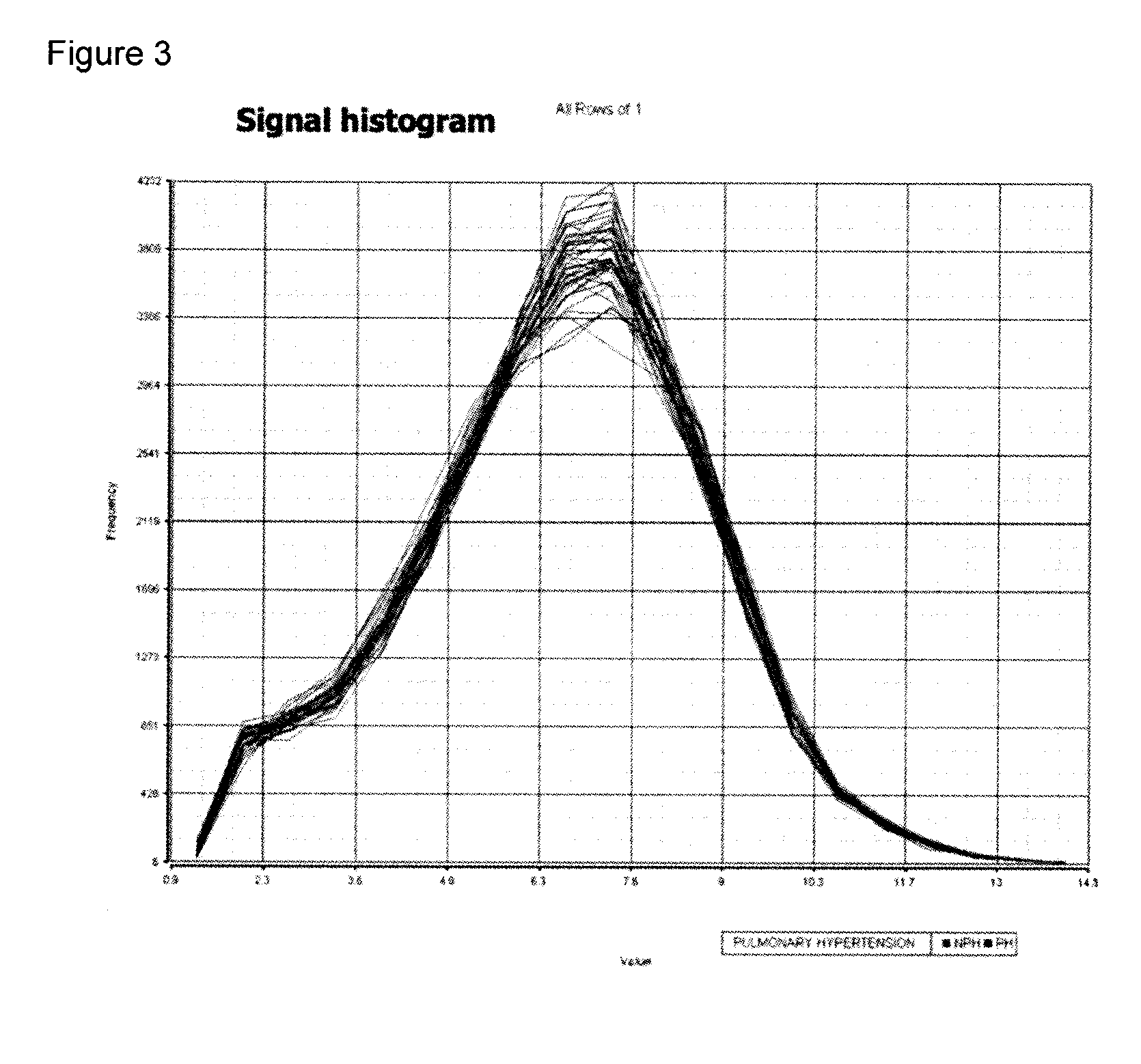Methods and compositions for diagnosing pulmonary fibrosis subtypes and assessing the risk of primary graft dysfunction after lung transplantation
a pulmonary fibrosis subtype and primary graft technology, applied in the field of methods and compositions, can solve the problems of poor correlation with pulmonary function tests, primary graft dysfunction, limited lung transplantation in pf, etc., and achieve good prognosis and poor prognosis
- Summary
- Abstract
- Description
- Claims
- Application Information
AI Technical Summary
Benefits of technology
Problems solved by technology
Method used
Image
Examples
example 1
Methods
[0193]116 lung tissues biopsies were obtained from the recipient organs of PF patients undergoing a Lung Transplant (LTx). PAP was measured intraoperatively before starting LTx. The mean PAP was calculated according to the following formula: DPAP+⅓(SPAP-DPAP).
[0194]For the development analysis, RNA was extracted from explanted lungs in 84 patients with PF (52 males, age 59±8 years, BMI 26±4, mPAP 29±12 mmHg, 69 bilateral LTx). 17 patients had severe Pulmonary Hypertension (PH) (mean PAP 40 mmHg; PH Group), 22 had no PH (mPAP 20 mmHg; NoPH Group), and 45 had intermediate mPAP (21-39 mmHg; Intermediate Group).
[0195]RNA was extracted from 32 more patients (19 males, age 55±13 years, BMI 27±5, mPAP 31±18 mmHg, 19 bilateral LTx) for the validation analysis.
[0196]RNA was isolated with TRizol® Reagent (Invitrogen, Cat. No. 15596-018); a clean up step was performed then with RNeasy MinElute Cleanup kit (QIAGEN, Cat. No. 74204). Totally 50 μl RNA was collected for each sample and divi...
example 2
[0207]Gene expression profiling in the explanted lung from patients with Pulmonary Fibrosis is a better predictor of Primary Graft Dysfunction after lung transplantation than Pulmonary Artery Pressures
[0208]Pulmonary fibrosis is a chronic disease causing inflammation of the lungs. In the majority of cases the cause is never found—defined as idiopathic pulmonary fibrosis (IPF). There are five million people worldwide that are affected by this disease and the incidence rate appears to be increasing. Pulmonary hypertension (PH), although can be caused by many other diseases, is also be presented along with IPF. Pulmonary hypertension is prevalent in approximately 30-45% of IPF patients. In addition, PH is often associated with decreased survival in patients with IPF. Eventually, the majority of patients with IPF go on to develop PH. This condition is often fatal. Chest x-rays, electrocardiography, and echocardiography give clues to the diagnosis, but measurement of blood pressure in th...
example 3
[0230]Gene expression levels of selected genes were assessed by RT-PCR. PTX3 was one of the gene expression levels measured by RT-PCR. The levels were elevated in the noPH group and absent in the PH group.
PUM
| Property | Measurement | Unit |
|---|---|---|
| Tm | aaaaa | aaaaa |
| PH | aaaaa | aaaaa |
| pulmonary arterial pressure | aaaaa | aaaaa |
Abstract
Description
Claims
Application Information
 Login to View More
Login to View More - R&D
- Intellectual Property
- Life Sciences
- Materials
- Tech Scout
- Unparalleled Data Quality
- Higher Quality Content
- 60% Fewer Hallucinations
Browse by: Latest US Patents, China's latest patents, Technical Efficacy Thesaurus, Application Domain, Technology Topic, Popular Technical Reports.
© 2025 PatSnap. All rights reserved.Legal|Privacy policy|Modern Slavery Act Transparency Statement|Sitemap|About US| Contact US: help@patsnap.com



